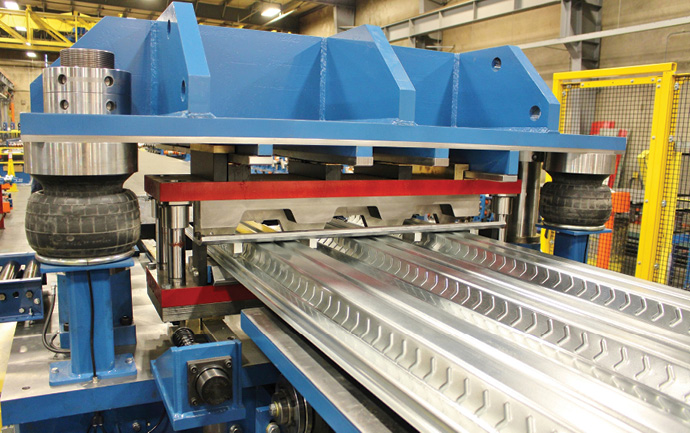Payroll Tax Deferral Plan Clarifications
An action taken by the White House in the aftermath of COVID-19 is the option to defer certain payroll taxes.
Employees can defer paying their share of Social Security tax on applicable wages paid from Sept. 1, 2020, through Dec. 31, 2020, in exchange for larger paychecks now. It would be deferred until Jan. 1, 2021, through April 30, 2021. At payback, employees would have deferred taxes withheld along with their typical withholding, resulting in smaller paychecks at that time. Eligible is any employee whose gross earnings are $4,000 or less on a biweekly payroll or $4,333 on a semimonthly payroll.
When the deferral program was signed as a presidential memorandum on Aug. 8 by President Trump, there remained many unanswered questions. Some of those have now been answered. Scott Hess, with CliftonLarsonAllen Wealth Advisors LLC, breaks down the primary considerations for employees prior to making any decision regarding deferral:
“Deferral of the employee share of Social Security tax results in an increased amount of take-home pay. The deferral is not a suspension of the payroll tax, and an employee will have twice as much Social Security tax withheld for the period Jan. 1, 2021, through April 30, 2021, (assuming that pay remains the same),” he noted.
Employers, too, need to carefully look at the pros and cons.
“Other than the employee goodwill that is created by not withholding the employee Social Security tax, the notice provides many burdens and uncertainties for the employer,” Hess said, adding that, “the deferral does not appear to be mandatory but the employer must bear the burden of administering the deferral, including increased fees from payroll processing companies and increased risk of errors due to the deferral.
“The employer is responsible for withholding and depositing the additional withholding that occurs January 2021 through April 2021.”
And if the employee leaves the company? “If an employee leaves or is terminated and his final paycheck does not cover the remaining outstanding deferred payroll tax related to that employee, it appears the employer will have to make up the difference,” Hess said.
Hess believes the disadvantages or challenges to both employees and employers are significant. “The challenges include difficulties in administering the deferral, the greater financial burden that will be placed on employees next year, the short-term nature of the deferral (i.e., a four-month deferral), and the risk the employer may not be able to recoup the deferred amount from those employees who quit or are terminated before the entire amount of deferred taxes is collected.
“If an employer does not opt into the deferral, it would be prudent for the employer to consider communicating with employees why the employer has chosen not to defer (e.g., disruption of processes, risk of errors from changing procedures, or cost of modifying computer programs for a temporary period),” Hess concluded.
Because additional clarifications for Payroll Tax Deferral may be forthcoming, consultation with a tax advisor is encouraged before making plans to participate.
Concerns Grow over Lumber Prices, Supply Shortages
NAHB (National Association of Home Builders) Senior Officers and senior staff held a 30-minute virtual meeting with Commerce Secretary Wilbur Ross on Sept. 25 to discuss the growing impact that escalating lumber prices and supply shortages are having on the housing industry and economic recovery.
According to Random Lengths, lumber prices have skyrocketed more than 170% since mid-April, and the residential construction industry has absorbed the largest four-month increase in lumber prices since such data was first recorded in 1949.
NAHB Chief Economist Robert Dietz told Ross that this unprecedented lumber price spike has added more than $16,000 to the price of a typical new single-family home and $6,000 to the price of an average new multifamily unit.
Rising lumber prices are clearly making it much harder to build homes that are affordable to low- and moderate-income families.
NAHB Third Vice Chairman Alicia Huey and Immediate Past Chairman Greg Ugalde told the secretary what the association has heard from members about how the lumber crisis is hurting their businesses and impeding an even more robust housing upturn, according to NAHB.
Secretary Ross told NAHB leaders that lumber mills are concerned that the ongoing housing upturn is temporary, and Dietz assured Ross that the solid housing market is sustainable.
NAHB stressed that between harvesting and mill capacities, the fact that most mills are running at two shifts rather than three is the greater problem.
NAHB calculated the recent average home price increases based on the softwood lumber that goes into the average new home, as captured in the Builder Practices Survey conducted by Home Innovation Research Labs. Included is any softwood used in structural framing (including beams, joists, headers, rafters, and trusses), sheathing, flooring and underlayment, interior wall and ceiling finishing, cabinets, doors, windows, roofing, siding, soffit and fascia, and exterior features such as garages, porches, decks, railing, fences, and landscape walls.
The softwood products considered include lumber of various dimensions (including any that may be appearance grade or pressure-treated for outdoor use), plywood, OSB, particleboard, fiberboard, shakes, and shingles—in short, any of the products sold by U.S. sawmills and tracked on a weekly basis by Random Lengths.
Current Report Finds Construction Wages Above Average
On a national level, construction workers earn an average annual salary of $47,430 — 19% more than the median wage for all workers ($39,810) in the U.S. Researchers at the reporting firm Construction Coverage discovered these findings by analyzing data from the Bureau of Labor Statistics and factoring in cost of living to arrive at their conclusions. Their report was released in late August.
The construction industry generally compensates its workers well despite the fact that few have a postsecondary degree, Construction Coverage noted. For reference, all full-time workers in the U.S. with only a high school diploma earn about $38,800 annually, and those with less than a high school degree earn just under $31,000.
At the state level, the Midwest claimed the highest median wages for construction workers. After adjusting for cost of living, Illinois ($71,111), Alaska ($61,107), Minnesota ($60,913), Missouri ($58,525), and North Dakota ($57,936) are the Top 5 highest paying states for construction workers.
States in the Southern region, such as Mississippi, Florida, Georgia, Texas, and the Carolinas, all pay less than $45,000 per year.
For the study, metros were grouped into the following cohorts based on population: large metros: more than 1,000,000 residents; midsize metros: 350,000-999,999 residents; small metros: 100,000-349,999 residents.
Following are the top wages for small metro areas, in order:
Kankakee, IL $76,150
Rockford, IL $73,584
Carbondale-Marion, IL $72,782
Wheeling, WV-OH $67,612
Champaign-Urbana, IL $65,944
Duluth, MN-WI $65,212
Mount Vernon-Anacortes, WA $64,532
Fond du Lac, WI $63,513
Springfield, IL $62,900
St. Cloud, MN $62,860
Atlantic City-Hammonton, NJ $62,423
El Centro, CA $62,339
Eau Claire, WI $61,264
Decatur, IL $61,219
Weirton, WV-Steubenville, OH $60,618
According to the U.S. Census Bureau, total construction spend in the U.S. hit $667.9 billion in the first half of 2020. While this represents a 5% increase year-over-year, spending had declined by $86 billion since the start of COVID-19. Also, nearly 444,000 construction workers lost their jobs in that time.
Despite the decline, construction activity has been able to ramp up in some parts of the country and employment numbers have gone up in the past three months prior to when the report was issued in late August. RF
Originally published as “Payroll Tax Deferral Plan Clarifications” Fall 2020 issue Rollformer Magazine.



















